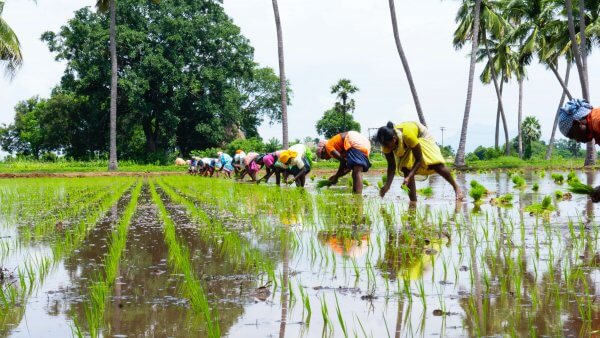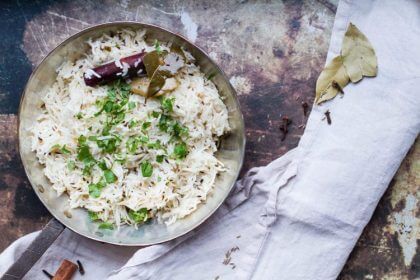Rice is one of my go-to foods, and one that I have always been aware of eating, having grown up in an Indian household. I cannot think of a single Indian person I know who doesn’t like this amazing food. Rice has been cultivated for thousands of years in many parts of the world, and there is good reason for this. It is nutritious, inexpensive, versatile and incredibly healthy. Most areas of the world have a rice speciality as part of their cuisine. Think risotto in Italy, paella in Spain, and the endless rice dishes of Africa, the caribbean, and the mediterranean. There are also many rice varieties.
Ayurveda and Basmati rice
In India, however, the only rice considered worthy of being featured, is the world famous basmati, known as king of all rices. This simply exquisite, delicate and aromatic rice is also revered in Ayurveda. Basmati rice is considered to be sattvic, which means that it creates purity, clarity and harmony in the body,mind and spirit. It is also easy to digest, cooling, pacifying to all three Doshas, and it nourishes all seven tissues. Like all pure, natural foods, it is brimming with PRANA, the pure, divine, intelligent energy of the sun and moon. In India, rice symbolises prosperity, fertility and divinity. Rice grains are used in many religious and spiritual ceremonies, and in temple worship.

How to prepare rice
It’s always a good idea to wash the rice two to three times, using your fingers to massage the grains in the water. This removes a good deal of the starch. Now soak it for at least an hour, or better still, soak the rice for your evening meal in the morning. Soaking it all day means you will end up with fluffy rice with all the grains separated rather than stuck together.
Cook it perfectly
If you are making plain basmati, when you are ready to cook it, drain the soaking water, and add fresh water, double the quantity of the rice, to the pan. Throw in a pinch of salt, and cook on a medium heat until softly boiling. Reduce the heat to minimum, and place a lid on the pan, with a small opening at one end, and time it for 10-12 minutes. It’s ready when all the water has evaporated, and the grains are soft and separated. You can add a little ghee or butter to the rice and fork it through to serve.
A flavoured version
Here’s a fabulous recipe that is a twist on good old regular basmati, that my mother makes and refers to as brown rice. It is simply basmati that takes on a slightly golden colour when cooked with browned onions and spices. Wonderfully aromatic and grounding, it is a perfect accompaniment to any Indian food, and adds a touch of sophistication to a dinner party. It is also a great dish to eat on its own, perhaps with a side helping of fresh yogurt when you feel like you need an uncomplicated but satisfying bowl of goodness.

For this dish, wash and prepare the rice as above, but once you drain the soaking water, set the rice aside.
Ingredients to make enough for four people as
a side dish:
180g basmati rice plus soaking water
360ml hot water for cooking the rice
A tablespoon rapeseed oil
A tsp ghee or butter
Half an onion, finely chopped
A tsp each of cumin and black mustard seeds
A small stick of cinnamon
A black cardamom pod or three green ones, slit down the side
Two cloves
1/2 tsp jaggery or muscovado sugar
Method:
Heat the oil and ghee until hot, then add the mustard seeds. Once they pop, add the cumin seeds, followed by the onion. Fry until well browned before adding the spices and sugar. Cook for five minutes on a low heat before adding the drained rice. Mix well until all the moisture from the rice has disappeared, before adding the hot water and a good pinch of salt. Boil and cook as above.
Delicious, divine goodness!
